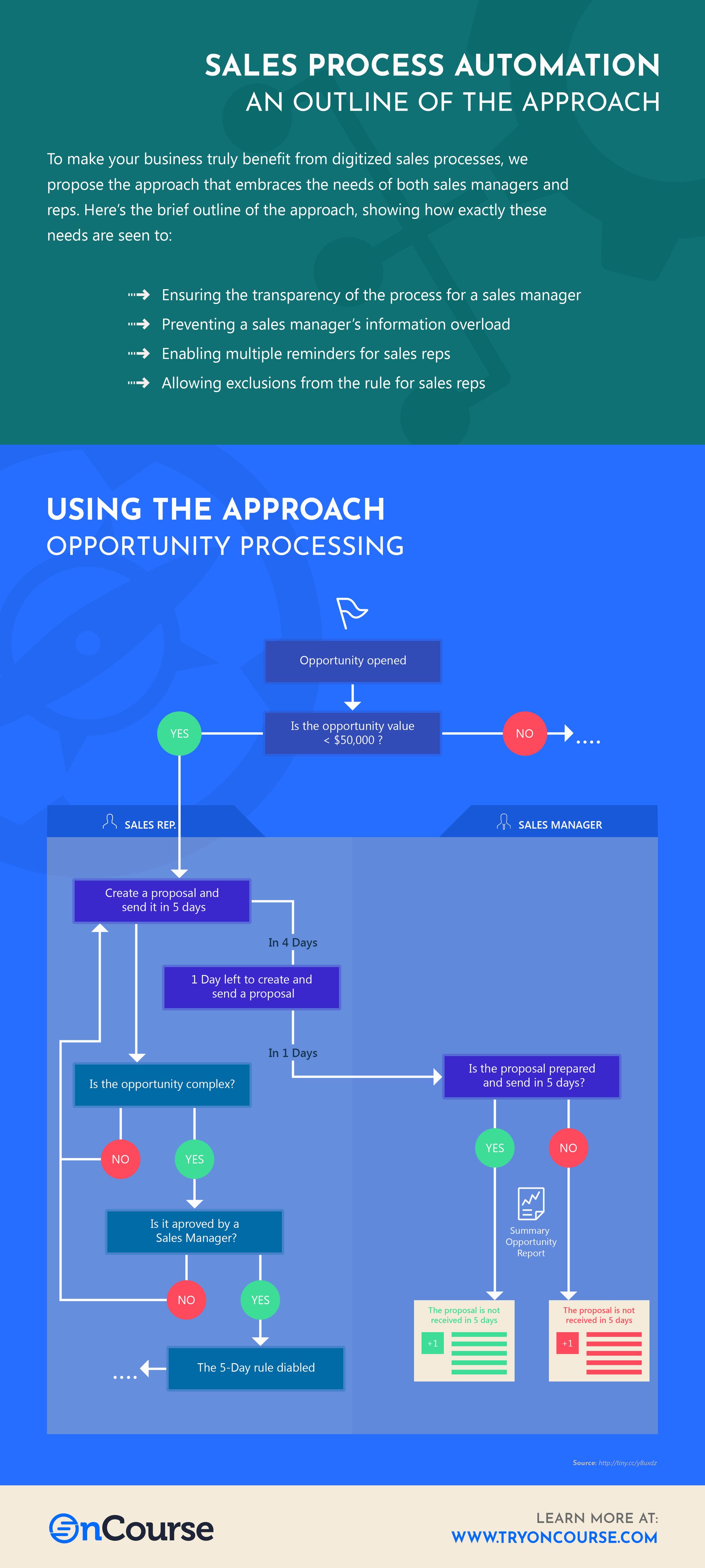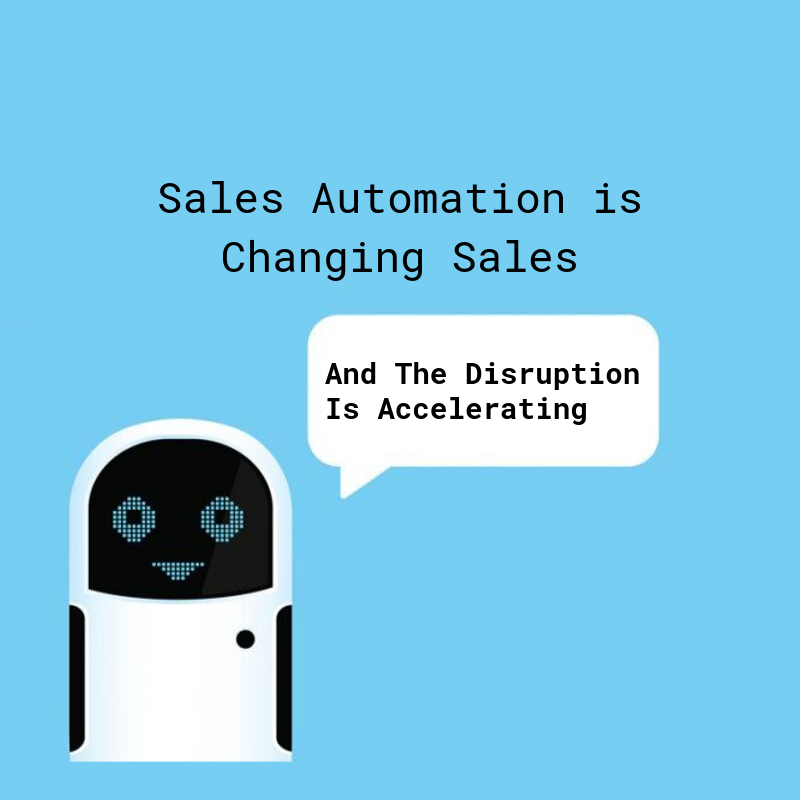Automation is slowly but surely finding its way into everyday life, and it is accelerating communication on an unprecedented scale. Have you noticed how quickly you started using the pre-populated responses for text messages on your smart phone? What about those pre-written sentences when typing up that last Gmail response? These changes are no accident but a concerted effort by tech firms to make the products we use every day all day more intuitive and effective.
Such small changes may seem insignificant, but consider the 5.13 billion people with mobile devices worldwide and a few seconds shaved across everyone’s daily communication is a tectonic shift in productivity.

What you might not expect is that in no arena is automation moving more quickly than in sales. Sales positions constitute a major swath of the American work force, and nearly every position outside of technical sales and inside sales positions are reported to have a negative growth rate over the next 10 years. Unsurprisingly, retail and other commoditized roles are the hardest hit with the rise of e-commerce and in-store checkout and pickup options expanding.
Sales organizations are no stranger to change and have historically adapted well to change. The telephone brought about the advent of inside sales teams focused on productive dialing. Affordable airfare allowed outside sales teams to travel the world to drop in on major prospects and current clients as needed. And, of course, the biggest disruption of all has been the internet, lighting a match to the retail sector. Email has become the bread and butter of sales, taking over for the pen and paper and otherwise transforming written communication.
With the latest disruptions brought by technology, many argue the level of innovation is fundamentally different and potentially harmful. Automation is a hot button issue, the topic of political discussion, included in the farewell addresses of presidents, and stumping content for presidential hopefuls. Major research firms like Gartner are projecting the growth of a new market, sales automation, to reach into the tens of billions of dollars this year and hundreds of billions over the next decade.
The reality is that the sales role of today is no longer the sales career of the past. Yes, some jobs will fade away like the telegram delivery boy. But all this change isn’t something to fear. Every combined advance in technology over the last century has raised the standard of living globally.
In truth, sales automation started with the rapid advance and adoption of customer relationship management (CRM). Modern CRMs have given businesses everywhere the ability to offer long-term continuity of communication with their clients and materially reduced the burden of sales pipeline management for professionals and management teams. The 40+ billion-dollar CRM market still has plenty of runway as it only serves two-thirds of American businesses with adoption ongoing. We’ve personally talked with sales organizations with thousands of sales professionals and no CRM in sight. Many modern sales teams have adopted the tool as a necessity in the competitive landscape.
The end goal of every sales team and self-respecting sales professional is to effectively present the value of the business in the marketplace to buyers. And in many cases prospecting plays a major role, sifting through businesses to find the right buyers, present them with value and convert them to clients.
Nurturing prospects and keeping them engaged requires continuity that can be disrupted when sales professionals are inevitably promoted to new roles or exit an organization. CRMs have solved for this problem and now automation is stepping in to make the process more efficient.
Sales automation, and by extension marketing automation has numerous common examples, lets examine some of the big ones. Tracking email response, reply and open rates are a must have toolkit for sales teams. Pioneers in the email space such as Constant Contact, Mailchimp and other email providers have added additional functionality to capture use data from email enabling sales teams to automate testing of sales language that works. These advancements have been followed by the creation of templates.
A second and perhaps more powerful example of sales automation is found in data itself. Companies like Zoom Info, Hoovers, and Linkedin have revolutionized how sales teams interact with contact information. Never before has there been such transparency into an organizations structure and way to easily connect with senior resources. Sales data can be propagated and distributed to team members automatically on a weekly, monthly and daily basis with qualified lists, mapped in advance without lifting a finger beyond the initial setup.

Sales teams implicitly recognize the value of these individual components and are paying for an average of 5.8 tools, manually weaving together a tangled set of automation that has to date not existed together under one roof. A combination of all these tools is the natural next step in their development. Formerly these tools have existed as separately, tools like OnCourse CRM combine all of the best sales automation tools into one unified experience and wrap sophisticated math around communication to connection rates, deliverability and ultimately sales outcomes.
The results for businesses adopting CRM will be increased productivity, which will lead to growth and, ultimately, more jobs. Teams behind tools like OnCoruse CRM, launching this month, are leading sales automation transformation efforts for the better and making the sales professional’s toolkit more streamlined than ever before. OnCourse is a CRM that combines numerous disparate tools into a single powerful sales automation CRM; this is the future of CRM and the future of the sales industry. The OnCourse app can call, send SMS messages, email, track every communication on-the-go, and it intelligently finds the best time to send communications. Marketing and sales automation comes into play not only by combining all these tools in one simple offering but also by allowing teams to combine all of these forms of communication into powerful automated sequences with personalization at scale. And when these sequences automatically find the best time to send out to prospects, sales magic happens.
The number of communications required to reach and engage a cold prospect is significant. While this amount varies heavily by industry the average firm is executing between eight and seventeen different touch points on a prospect before they are in a position to buy. These touches typically include a combination of patterned email plus calling, and increasingly SMS. What is surprising is that most sales teams fail after the first communication and never truly follow up with enough consistency to move a cold prospect forward.
Tracking and mapping these touch points, let alone remembering to follow up in a timely manner are significant challenges. The most effective organizations are using a combination of tools for their drip sequences to nurture leads to the point of closing as soon as they reaches the account executives desk.
Simply put, the adoption of sales automation platforms will further accelerate and perpetuate their adoption due to the cost savings and value added through enhanced productivity. The growth of the industry to date more than supports this opinion. Rather than report on unreliable statistics about productivity gains, the sheer magnitude of growth in the industry is enough data to support the value add that these types of software services provide.
Automation is not something to be feared as so many op-eds and talking heads without real world business experience have purported; it’s an innovation that should be embraced. Sales professionals will continue to account for a major portion of the labor force. Sales automation tools like OnCourse help remove the fundamentally mundane and repetitive tasks that accompany sales activity.
By driving productivity these tools will allow for human flourishing, facilitate greater creativity and ultimately drive quality and personalized service that businesses and consumers prefer and demand. The role of the sales professional is hard work and sales automation tools like OnCourse CRM are going to go a long way in making every effort more effective.
Does it have to happen this way? Yes, I am here to say that sales automation is inevitable. It is already here, arrived and at our door, we only need to incorporate it. Early adopters who take efforts to leverage sales automation tools will likely reap untold benefits. And adoption of these tools will undoubtedly make the sales process more competitive. Value generated by these tools will perpetuate their adoption and further reinforce the value of automation for the sales professionals using them.

After all, sales is competition, the best teams with the best tools win.

